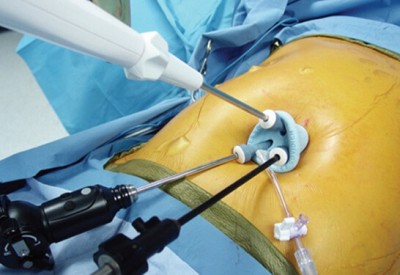SINGLE PORT BARIATRIC SURGERIES
Traditional laparoscopic surgeries use a telescopic rod attached to a video camera called a laparoscope, which is inserted through a small incision. Apart from this, 3 to 5 additional small cuts are made to insert the other surgical instruments to perform the surgery.
However, single-incision laparoscopy surgery (SILS) is a revolutionary minimally invasive surgical procedure conducted through a single incision. It provides a better cosmetic outcome, as a small incision is made through the patient’s navel or belly button, resulting in an almost scar less outcome.
INDICATIONS
Most patients who are good candidates for laparoscopic surgery are eligible for single-port procedures. Some of the surgeries that single incision laparoscopy is indicated for include cholecystectomy (removal of gall bladder), appendectomy (removal of appendix), splenectomy (removal of spleen), hepatectomy (removal of liver) and adrenalectomy (removal of adrenal glands). SILS can also be used for diagnostic purposes.
However, patients who have previously undergone multiple major surgeries to the abdominal region and those who are morbidly obese are not considered for SILS.
PROCEDURE
Single Incision Laparoscopy is usually performed as day surgery either in the hospital or outpatient surgery centre under general, regional, or occasionally local anaesthesia depending on the type of procedure performed and the surgeon’s preference.
The patient is made to lie down in a tilted position so that the feet are placed higher than the head. The surgeon makes a single incision of about 3/4th of an inch at the belly button and injects a harmless gas to expand the area and obtain a clear view of the operative site. A tube called a trocar or port is placed through the incision, through which the laparoscope (a narrow telescope having a light source and camera) and tiny surgical instruments are inserted. The laparoscope guides your surgeon with images of the abdominal contents that can be viewed on a large screen. Once the diseased organ is excised, your surgeon removes the instruments, releases the gas, and closes the incision with a small bandage.


